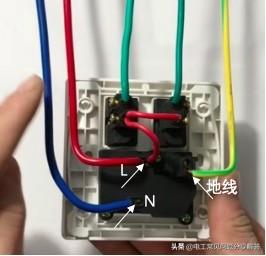1. 所有的时间都可以用
【小时 分钟】直接读:
6:10 six ten
8:30 eight thirty
2:40 two forty
2. 如果所表述的时间在半小时之内,可以用【分钟 past 小时】:
6:10 ten past six
4:20 twenty past four
10:25 twenty-five past ten
3. 如果所表述的时间在半小时之外,可以用【(相差的)分钟 to (下一)小时】:10:35 twenty-five to eleven
5:50 ten to six
9:49 eleven to ten
4. 如果所表述的时间恰好为半小时,可以用【half past 小时】:
11:30 half past eleven
2:30 half past two
半小时 half an hour
5. 如果所表述的分钟和15有关,就有三种表达法:(15分钟又叫一刻钟:a quarter)
9:15 nine fifteen ; fifteen past nine ; a quarter past nine
3:45 three forty-five ; fifteen to four ; a quarter to four
6. 整点的表达:
It s two./It s two o ’clock.现在是两点整。(另外英语中的 noon 和 midnight 可分别直接表示白天和夜晚的12点),现在是中午十二点。
It s (twelve) noon. 现在是半夜零点。
It s (twelve) midnight.

7. 大约时间:
It ’s almost two. 马上到两点了。
It ’s not quite two. 还不到两点。
It ’s just after two.刚过两点。
8. 若想表明是上午,可在时间后加上a.m.;同理,下午加p.m.
thirteen past six a.m.上午六点十三分。
four o ’clock p.m.下午四点。
9.表示“在某一时刻”,应该用介词 at 。如:
at five-five 在 5 点 5 分
at three o'clock 在 3 点整
10.对时刻提问时,疑问词一般用 what time 。
如:
— What time is it now ?现在几点钟?
— It's twelve fifteen. 12 点 15 分。
- 练一练
-现在九点四十五分!
It s nine forty-five. =It s a quarter to ten.
现在两点十七分!It s two seventeen. =It s seventeen past two.
现在三点钟!It s three. =It s three o clock.现在九点半!It s nine thirty. =It s half past nine.
现在六点十五分!It s six fifteen. =It s a quarter past six.
现在三点五十分!It s three fifty. =It s ten to four.
世纪、年、月、日的表达
1. 世纪:
① 用“定冠词 序数词 century”表示
例:在十七世纪 写作:in the 17th century读作:in the seventeenth century
② 用“定冠词 百位进数 s”表示例:在十七世纪 写作:in the 1600s读作:in the sixteen hundreds(注意:这种情况下,实际表达的世纪数是阿拉伯数字本身加一)
2. 年代:
① 用“定冠词 (世纪百位进数 十位年代数) s”表示
例:在二十世纪三十年代 写作:in the 1930s
读作:in the thirties of the twentieth century, in the nineteen thirties
② 表示某年代的早期、中期和晚期,可以在定冠词后添加early, mid-和late
在二十世纪二十年代早期 in the early 1920s
在二十世纪五十年代中期 in the mid-1950s
3.年月日:
(1)年份
① 读年份时一般分为两个单位来读,前两个数为一个,后两个数为一个:1949 读作:nineteen forty-ninenineteen hundred and forty-nine
② 如果是三位数,先读第一位,再把后两个数合起来读:253 读作:two fifty-three two hundred and fifty-three
③ 另外: 2000读作:two thousand
1902 读作:nineteen hundred and two, nineteen o two
④ 如果要使用year,year放在数词之前:
in the year two fifty-three B.C. 在公元前253年
(2)月份
月份是专有名词,除了少数几个月份外都有缩写形式:
January
Jan. 一月
February
Feb. 二月
March
Mar. 三月
April
Apr. 四月
June
Jun. 六月
July
Jul. 七月
August
Aug. 八月
September
Sept. 九月
October
Oct. 十月
November
Nov. 十一月
December
Dec. 十二月
(注意:缩写形式后面的点不能省略,因为它是表示缩写形式的符号)
(3)日期:
用序数词表示例:
十月一日 写做:October 1, October 1st, 1 October, 1st October, (the) 1st of October等,其中的October都可以写成缩写形式Oct.
读作:October the first, the first of October
(4)年月日
① 月日年
例:2002年1月17日 写作:January 17(th), 2002, January seventeenth, 2002
读作:January the seventeenth,two thousand and two
② 日月年
例:2002年1月17日 写作:17(th) January, 2002, the seventeenth of January, 2002
读作:the seventeenth of January, two thousand and two
4. 介词的使用:
若指在哪一年或哪一月,用介词in;
若具体到某一天,需用介词on。
She was born in 1989.
She was born in August.
She was born in August 1989.
She was born on 2nd August, 1989.
介词的区别
1.表示时间的at、on、in的用法区别
at主要表示:
(1)在某具体时刻之前,如at seven o’ clock,at 7:30.
(2)在固定短语中,如:at noon,at night,at that time, at the weekend
at 3 pm, at that moment , at present, at Christmas Eve,
at Christmas, at breakfast/lunch, at midnight, at the age of 12, at the beginning of the year
总结:用在时间点、中午(noon)晚上(night)固定搭配里,以及节假日期间用介词at.
On用来表示
“在……天”,如:On Monday,On May lst, On Children’s Day.
on Wednesday, on Sundays, on the morning of May 1st, on a cold night, on a rainy afternoon, on the fifth of July,
on Christmas Day, on Easter Day
总结:在星期,具体某一天的上午/下午/晚上,以及节假日当天,用介词on.
in用来表示:
(1)在某年、某月、某季节.
(2)在—段时间之后,如:in two hours,in a few days.
注意:在纯粹地表示在上午/下午/晚上时,用in the morning/afternoon/evening,但在某一天的上午、下午、晚上前要用介词on.如:on Monday morning,on the morning of Children’ s Day.但是泛指的noon, night 前加at.
in spring , in the evening, in the middle of May, in 2014 ,
in his thirties, in five hours, in January, in the 1990's,
in/ during the day
总结:在月,四季,年,年代,世纪,泛指的在上午/下午/晚上时间短语里,以及其他表示较长时间的名词短语前,用介词in。
2.表示“一段时间”的for与since的用法区别
for表示“计;达”,表示动作持续或状态存在的时间段,后面接时间段,since之后接时间点.
since sometime(时间点)= for some time(时间段)= since some time ago
如:since two years ago = for two years
“for 时间段”表示“延续….之久”,其中:
与现在完成时连用,表达从过去延续到现在结束;
与过去时连用,表达过去一段已经终结的时间;
与将来时连用,表示延续到将来的一段时间。
例句:
Some even have been planting this dream in their mind for years.
有些人甚至多年来一直在他们的脑海中有这样的憧憬。(完成时)
I organized an English club and was the captain of the club for a year.
我组织过一个英语俱乐部,并担任了一年的队长。(和过去时)
They will stay in China for two years.
他们将在中国待上两年。(和将来时)
“since 时间点”,表达从那个点开始,延续到现在,所以翻译为“自从(过去某个时间)以来”,既然跨度为两个时间,自然要用完成时。
例句:
They have been friends since childhood.
他们从幼时起一直是好朋友。
She"s been skiing since childhood.
她从幼时起就开始滑雪。
It"s been an age since we met.
我们好久未见面了。
3.表示时间的before与by的用法区别
before与by都可表示“在……之前”,但by含有“不迟于……”、“到……为止”的意思.如果by后是将来的时间,则与将来时连用,若by后是过去的时间,则与过去完成时连用.
We had finished our work by last Friday.
Wash your hands before dinner.
其他介词表达:
1.during: 时间段,“在……期间”,during the winter/ performance
2.after: “在……之后” After the earthquake, everything was out of order.
3.until/till: “在……以前”;“到……为止” We worked until darkness.
介词的省略
表示时间介词at,on,in 的省略
(1) 在 next, last, this, these, today, yesterday, tomorrow, one, every, each, all等词前,一般不用 at,in,on.
(2) 在某些名词词组前,可以省略(也可不省)如:(on) that day,(in)the year before last
共勉:
Learn from yesterday, live for today, hope for tomorrow. 借鉴昨天,活在今天,憧憬明天。
,




